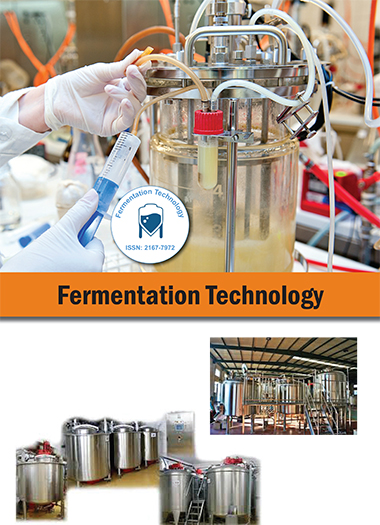Indexé dans
- Ouvrir la porte J
- Genamics JournalSeek
- Accès à la recherche mondiale en ligne sur l'agriculture (AGORA)
- RechercheRef
- Université Hamdard
- EBSCO AZ
- OCLC - WorldCat
- Publions
Liens utiles
Partager cette page
Dépliant de journal

Revues en libre accès
- Agriculture et aquaculture
- Alimentation et nutrition
- Biochimie
- Bioinformatique et biologie des systèmes
- Business & Management
- Chimie
- Génétique et biologie moléculaire
- Immunologie & Microbiologie
- Ingénierie
- La science des matériaux
- Neurosciences & Psychologie
- Science générale
- Sciences cliniques
- Sciences environnementales
- Sciences médicales
- Sciences pharmaceutiques
- Sciences vétérinaires
- Soins infirmiers et soins de santé
Abstrait
Effect of Divalent Metal Ions on Glucoamylase Activity of Glucoamylase Isolated from Aspergillus niger
Okwuenu PC, Agbo KU, Ezugwu AL, Eze SO and Chilaka FC
This study investigates the production of glucoamylase from Aspergillus niger in a submerged fermentation process using amylopectin fractionated from guinea corn starch as the carbon source. This work also studies the effect of a few metal ions (Ca2+, Zn2+, Co2+, Fe2+, Mn2+ and Pb2+) concentration on the glucoamylase activity. A Fourteen day experimental study was carried out to determine the day of highest glucoamylase activity. Maximum glucoamylase activity was observed on day five of the submerged fermentation; hence, day five was mass produced. The specific activity for the crude enzyme was found to be 729.45 U/mg. The crude enzyme was purified to the level of gel filtration (using sephadex G-100) via ammonium sulphate precipitation. Ammonium sulphate saturation of 70% was found suitable to precipitate the enzyme. After ammonium sulphate precipitation and gel filtration, the specific activities were found to be 65.98 U/mg and 180.52 U/mg respectively. The glucoamylase activity was enhanced by 2 mM to 5 mM of Ca2+, Co2+, Fe2+, Mn2+and Zn2+ but Pb2+ had inhibitory effect on the enzyme. The Michaelis constant, Km and maximum velocity Vmax of the enzyme was obtained from the Lineweaver-Burk plot of initial velocity data at different substrate concentrations. They were found to be 770.75 mg/ml and 2500 μmol/min respectively, when using cassava starch as substrate. The enzyme glucoamylase is known to have useful applications in food processing industries and fermentation biotechnology